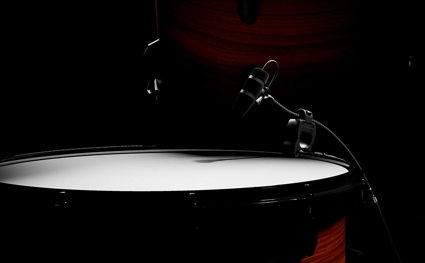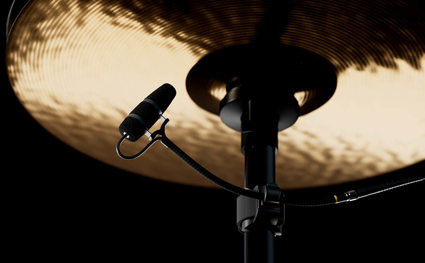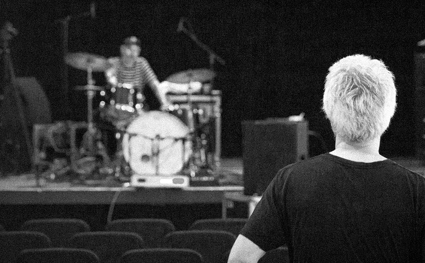How to mic a kick (bass) drum
Guidelines for miking the kick (bass) drum.

This article will give you some information about the kick (bass) drum as well as guidelines on close miking the instrument and suitable placement options.
Please remember, great sound is subjective. The miking methods described in this article are suggestions only. Try these methods out, but make sure to listen and choose the best solution for your specific situation.
An instrument’s sound is usually designed to be experienced at a distance so that all the different elements of the sound are naturally blended into perfect harmony. Yet often, mounting a microphone directly on the instrument is the most practical solution. Close miking an instrument is often considered to be a compromise to the instrument’s true acoustic sound.
Finding and placing the microphone in the instrument’s sweet spot – or your preferred location – can be a challenge.
The instrument
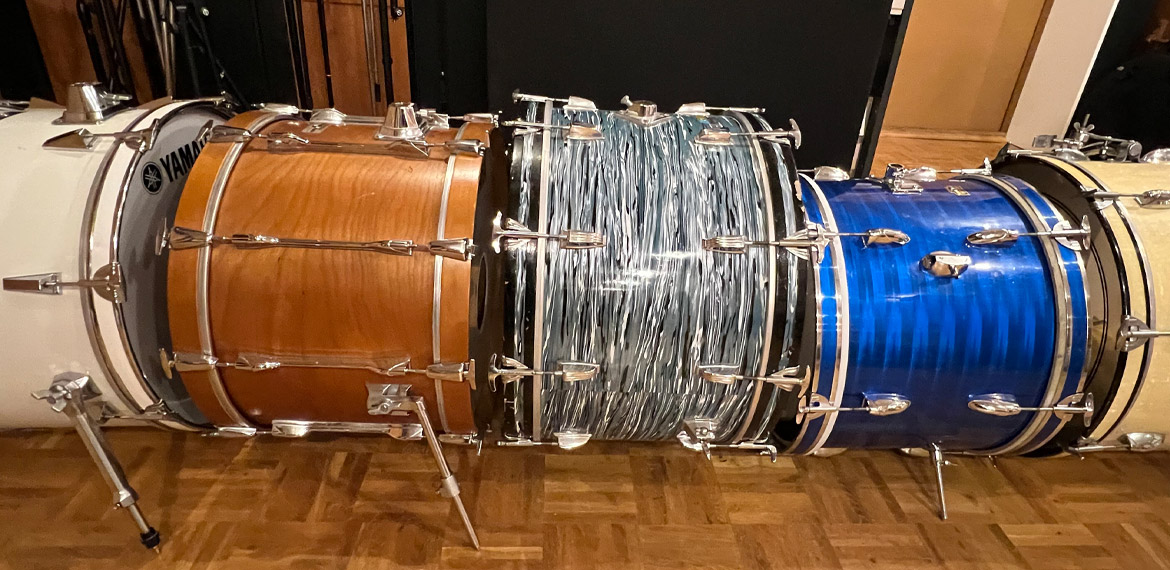
The kick drum is the largest sound source of the entire drum kit and the one with the lowest frequencies. Its sound differs a lot depending on the drummer’s choice of size, heads, tuning, muffling and whether there is a hole in the resonator head or not.
A jazz drummer will typically use a smaller-sized drum (down to 18" or less), thin heads and high-pitch tuning. In addition, a jazz kick drum often does not have a hole in the resonator head making it necessary to place a mic outside, leading to a more round, mid-range heavy sound. A mic can also be permanently installed inside the kick. Alternatively, the mic can be placed facing the beater head for more attack but with more crosstalk/ bleed from the other drums in the kit.
In contrast, the standard rock kick drum has a 22" diameter (often up 24"-26") and a hole in the resonator head. The typical rock drummer uses a thick batter head or even a 2-ply head and tunes it very low, to gain maximum attack and low end. Since there is a hole, a mic can be placed inside to get more attack when the beater hits the batter head.
A drum kit can produce very high peak sound levels. It is not unusual to see levels in excess 156 dB at close range. Whatever type of mic is used; it must be able to manage these levels without clipping.
Kick drum mic placement
The kick drum is a large instrument and offers many placement options on and around it so mic placement is very flexible, and the mic can be angled to give attack or low end.
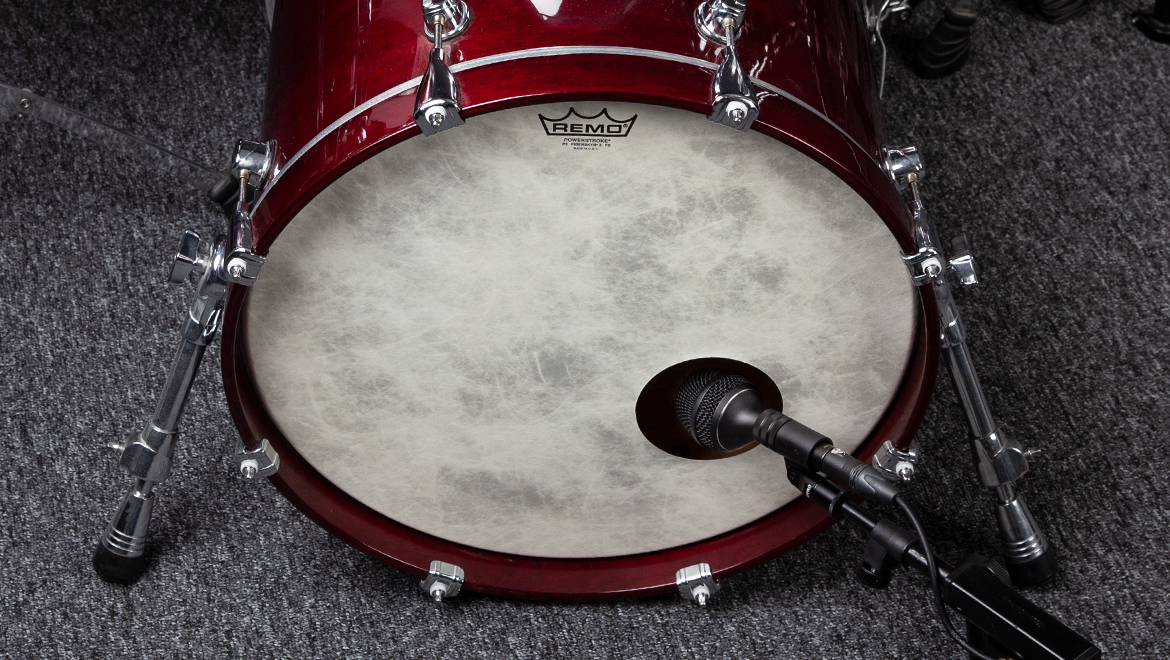
Sometimes placing a kick drum mic just outside the drum, on the edge of the resonator head, gives more impact. Just note that a lot of air is moved by the kick drum and when it is compressed through the hole in the resonator head, the mic can sometimes pick up wind/pop noise. Usually this can be dealt with by simply adjusting the angle of the microphone in the hole.
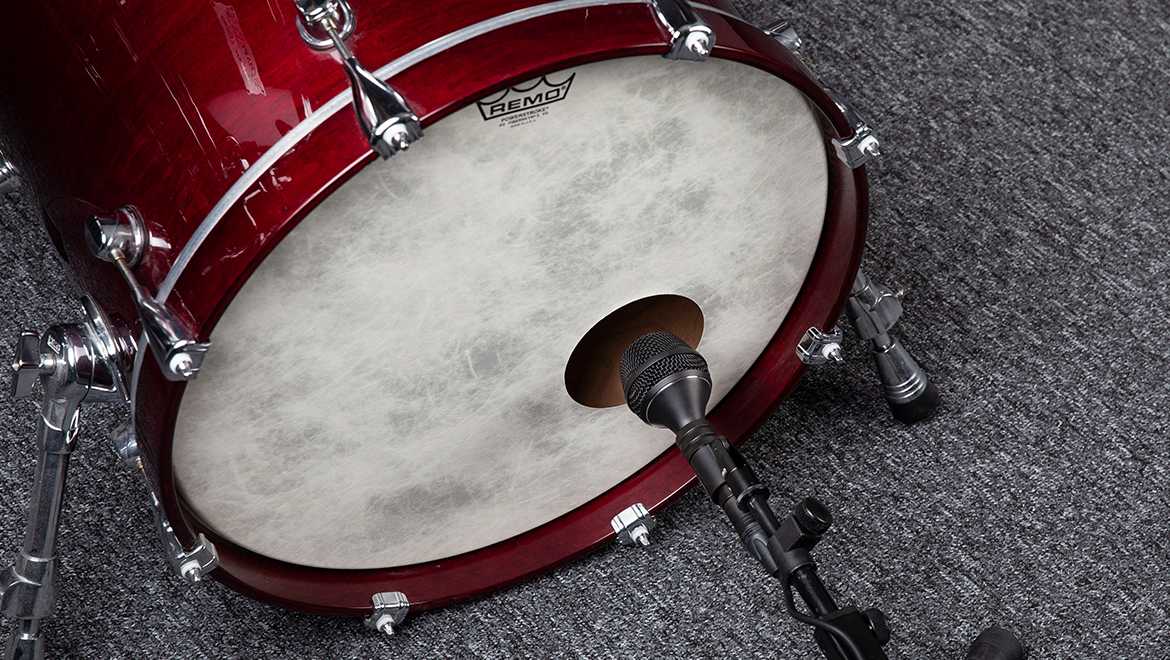
When close miking, the resonator head acts as a point source. This does not affect the sound when using omnidirectional mics but when using directional mics, proximity effect will lead to an increase in low frequency (bass) response as you move the mic closer to the source. Furthermore, if the resonator head is tuned very low, it may also influence the low frequencies if the microphone is angled and pointing at the edge of the hole.
To counter this, and get a punchier sound, the microphone can be placed inside the drum. The sound pressure level is not as high inside as it is just outside the hole so this position may result in a thinner sound (fewer low frequencies), sounding more natural and flatter. But kick drums vary so there are exceptions to the rules.
To pick up a more natural sound that incorporates the entire drum kit together with the ambient sounds of the room, a stereo kit of omnidirectional microphones placed approximately 1 meter in front of the kit, low, in front of the kick drum is a fantastic alternative.
There are so many ways to mic a kick drum. In the end, it all depends on the instrument, the drummer and the sound wanted.
Types of kick drum microphones
Most kick drum mics on the market today are dynamic mics. This is mostly based on historical reasons and is traditionally the type of mic that many sound engineers and drummers use. While some dynamic mics are the chosen solutions for capturing the sound of the bass drum, their use comes with drawbacks as well, when compared to condenser mics.
Specifically, the popular dynamic kick drum mics found on the market capture good sound, but the sound is always tailored in some way. Some to support jazz drums, others for rock and still others for classical. While there is a specific use for all these mics, none of them capture the true, natural sound of the kick drum as a condenser microphone can. To hear the real drum sound come through, a professional, flat response, condenser mic should be used.
DPA's solutions for the kick drum
Error loading Partial View script (file: ~/Views/MacroPartials/TaggedProducts.cshtml)For close miking the kick drum, the 4055 Kick Drum Microphone delivers clarity and linear frequency response, both on-axis and off-axis. It is flexible enough to place inside or outside the drum.
A stereo kit can pick up a more natural ambient sound of the kick drum and surroundings.
Finally, the amazing 4041-SP Omni Large Diaphragm Microphone, P48 picks up all the details of the drum and offers superior sound quality.
